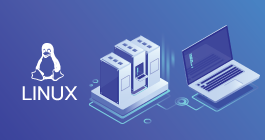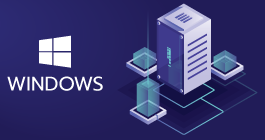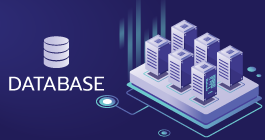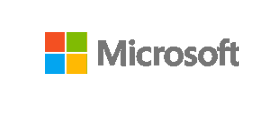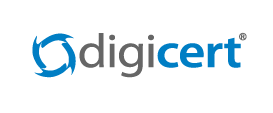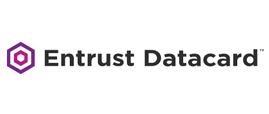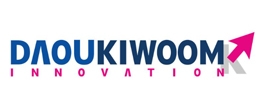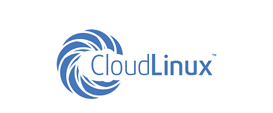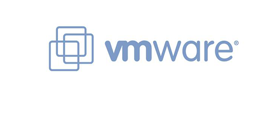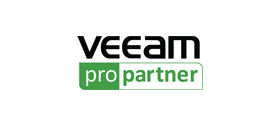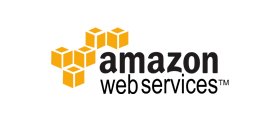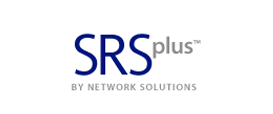-
Welcome to My Website
This is a text box. Write your own content here. This is an excellent place for you to add a paragraph.
Netway Support Center
เราพร้อมบริการคุณ ตลอด 24 ชั่วโมง
Payment & Invoices
Products Knowledge










Zendesk




Other Cloud Products
Technical Knowledge
Website/Install Application & FTP
Linux Technical Knowledge
Windows Technical Knowledge
Database
Blog list (8)
Group แต่ละประเภท แตกต่างกันอย่างไร ควรสร้างแบบไหนดี
Group แต่ละประเภท แตกต่างกันอย่างไร ควรสร้างแบบไหนดีหากท่านใช้งาน Microsoft 365 และต้องสร้าง Group มักจะเป็นคำถามเสมอมาว่า ท่านจะสร้าง Group ประเภทไหนดี แต่ละ Group มีข้อแตกต่างกันอย่างไรวันนี้เราจะมาอธิบายส่วนนี้ให้ทราบกันเบื้องต้นครับGroup ทั้งหมดบน Microsoft 365 Group มีอยู่ 5 ประเภท คือ1. Microsoft 3652. Distribution3. Mail-Enabled Security4. Security5. Dynamic Distribution Listข้อแตกต่างของแต่ละ Group1. Microsoft 365 เป็น Group ที่ Microsoft แนะนำให้ใช้งาน เนื่องจากเป็น Group ที่มีพื้นที่จัดเก็บในตัวเอง (SharePoint) และเป็น Group ที่ผูกกับบริการอื่นๆ อีกด้วย เพื่อช่วยลดความซ้ำซ้อนของการสร้าง Group ซ้ำๆ ในชื่อเดียวกัน เช่น ทีม Sales ต้องการใช้งานMailing ListSharePointTeamsPlanner ในกรณีนี้ หากเป็นการสร้างบริการจากบริการหลัก ก็จะพบว่ามีการสร้าง Group ซ้ำซ้อนตามแต่ละบริการ แต่ ถ้าหาก Admin เป็นฝ่ายดำเนินการให้ จะสามารถสร้างทุกๆ บริการนี้ให้อยู่ภายใต้ Group เดียวกันได้เลย ทำให้ลดความซ้ำซ้อนของข้อมูลและซ้ำซ้อนของ Group ไปด้วยโดยปริยายข้อเสีย Group ดังกล่าวมีปริมาณการรับ Email ที่จำกัดที่ 50GB. ซึ่งเมื่อเต็ม อาจจะต้องหาวิธีลบที่ยุ่งยาก2. Distributionเป็น Group ที่ใช้ทำ Mailing List โดยเฉพาะเท่านั้น ไม่มีพื้นที่ในตัวเอง ทำหน้าที่รับ Email และส่งต่อไปยังสมาชิกใน Group เท่านั้นข้อดี ไม่มีพื้นที่เต็มเกิดขึ้น เนื่องจากไม่มีการเก็บ Email ไว้ที่ตัวเองข้อเสีย เนื่องจากไม่มีพื้นที่ในตัวเอง จึงไม่มีสามารถดูย้อนหลังได้ว่า ได้รับ Email ใดบ้างผ่าน Group และไม่สามารถใช้งานในส่วนของการแชร์ไฟล์ได้3. Mail-Enabled Securityเป็น Group ที่เรียกได้ว่าเป็นการรวมกันระหว่าง Distribution และ Security group เข้าด้วยกัน ทำให้ใช้งานได้ทั้ง Mailing List และบังคับ Permission หรือบังคับการเข้าถึงต่างๆ ในด้วยนั่นเองข้อดี ไม่มีพื้นที่เต็มเช่นเดียวกับ Distribution และสามารถใช้อ้างอิงในการแชร์ไฟล์ หรือ Permission ต่างๆ ได้ข้อเสีย เนื่องจากไม่มีพื้นที่ของตัวเอง จึงไม่มีให้ดู Email ย้อนหลังใน Group ดังกล่าว เช่นเดียวกับ Distribution4. Securityเป็น Group ที่ใช้สำหรับบังคับ Permission หรือบังคับการเข้าถึงของสมาชิกใน Group เป็นหลัก เช่น แชร์ข้อมูลเป็นแบบกลุ่ม , กำหนดสมาชิกใน SharePoint เป็นแบบกลุ่ม หรืออื่นๆ ในลักษณะใกล้เคียงกันหมายเหตุ Group ดังกล่าว ไม่มี Email address ดังนั้น จึงไม่ได้ใช้ในการรับ-ส่ง Email5. Dynamic Distribution Listเป็น Group ที่ไม่มีให้สร้างจากหน้า Admin center แต่จะสร้างได้เฉพาะใน Exchange Admin Center เท่านั้น โดย Group ดังกล่าว มีเอกลักษณ์คือสมาชิกในกลุ่มจะไม่ได้กำหนดเป็นรายบุคคล แต่จะกำหนดเป็นค่าตัวแปร ยกตัวอย่างเช่นUsers with Exchange mailboxesMail users with external email addressesResource mailboxesMail contacts with external email addressesMail-enabled groups ซึ่งส่วนนี้ ทำให้ผู้ดูแลระบบไม่ต้องมาเพิ่ม User เข้า Group ที่เป็น All Employee เวลามีพนักงานเข้าใหม่นั่นเองข้อดี สะดวกต่อการกำหนดสมาชิกในลักษณะเป็นตัวแปร ทำให้ไม่ต้องมาคอยนั่งเพิ่มเสมอทั้งนี้ สำหรับ Microsoft 365 อาจจะมีการปรับเปลี่ยนเมนูต่างๆ ขึ้นอยู่กับระยะเวลาและการอัพเดทของระบบจากทาง Microsoft
⚡️ NETWAY COMBO - Feb 2022 ⚡️ เติมเต็มความรู้และอัพเดทเทรนด์กับเน็ตเวย์ฯ
💖 NETWAY COMBO - Feb 2022 💖 เติมเต็มความรู้และอัพเดทเทรนด์กับเน็ตเวย์ฯ 👍 ลงทะเบียน webinar เกี่ยวกับ Microsoft Cloud Service ในรูปแบบ NCE เร็วๆนี้ https://bit.ly/3hGE3o9🌏 Whitepaper: The Power BI Professional's Guide to Azure Synapse Analytics https://bit.ly/3BZcEXG 💨 Dynamics 365 Customer Service กับงานบริการลูกค้าที่ดียิ่งขึ้น https://bit.ly/3vFNP23 🚀 3 มี.ค. นี้ พบกับโลกทำงานยุค 2022 ในมุมของ Google จะเป็นอย่างไร? เชิญลงทะเบียน webinar https://bit.ly/3tzszs7 🔎 Google 2021 Year in SEARCH เจาะเทรนด์ผู้บริโภค ปี 2022 คู่มือที่นักการตลาดควรรู้ https://bit.ly/3tkhriF--------------------------------- เราดีใจที่คุณยังนึกถึงเรา 👧🧔 และพร้อมดูแลคุณ 24 ชม. ผ่านทุกช่องทางที่คุณสะดวก 🖥 Web Chat: [[URL]] 📞 Tel: 02-055-1095 💙 Facebook Messenger: @netway.official 💚 Line ID: @netway หรือ https://bit.ly/line-netway 📧 Email: support@netway.co.th
microsoft-365-thailand-promo
YOUR TITLE HERE This is a text box. Write your own content here. This is an excellent place for you to add a paragraph and let your visitors know more about you and your services. Your Title Here This is a text box. Write your own content here. This is an excellent place for you to add a paragraph. Your Title Here This is a text box. Write your own content here. This is an excellent place for you to add a paragraph.
Ebook: Global State of Customer Service (2022)
Ebook: Global State of Customer Service (2022) เมื่อความคาดหวังด้านการบริการลูกค้าเปลี่ยนไป โซลูชัน Dynamics 365 Customer Service จะเป็นตัวช่วยในการส่งมอบบริการลูกค้าให้ดียิ่งขึ้นDownload Ebook เราดีใจที่คุณยังนึกถึงเรา 👧🧔 และพร้อมดูแลคุณ 24 ชม. ผ่านทุกช่องทางที่คุณสะดวก 🖥 Web Chat: [[URL]] 📞 Tel: 02-055-1095 💙 Facebook Messenger: @netway.official 💚 Line ID: @netway หรือ https://bit.ly/line-netway 📧 Email: support@netway.co.th
[Google] What Will Your Workplace Look Like in 2022?
What Will Your Workplace Look Like in 2022?Google ขอเชิญทุกท่านเข้าฟัง Webinar Future Workplace Forum APAC วันที่ 3 มี.ค. นี้ เวลา 10-11.30น. โดยเนื้อหาครั้งนี้เน้นเรื่อง Digital Transformation ในที่ทำงาน มีทั้ง Collaboration, Productivity และความปลอดภัยและการหยิบยกตัวอย่างลูกค้าที่ประสบความสำเร็จในการทำ Digital Transformation ไม่ว่าจะเป็น Woolworths, Bluebell และThe Economist. ลงทะเบียน[EN Version]We are only days away from the first Future Workplace Forum APAC (March 3, 2022 10:00 AM - 11:30 AM GMT+7) where we will discuss how organizations have continued to transform the workplace in response to managing remote workforce and employees returning to office.The forum will feature Woolworths, Bluebell and The Economist, who will share their views on best practices and strategies to help build a productive and collaborative workplace.Key takeaways from the forum:Learnings on how to keep your workplace secure while maintaining high collaboration and productivity?The latest workplace innovation from Google Workspace to future-proof and stay ahead of the game.Best practices from Woolworths, Bluebell and The Economist.Virtual seats are limited so sign up now to secure your spot and participate in the Future of Work assessment that will include an exploratory workshop to jumpstart your transformation plan.Register เราดีใจที่คุณยังนึกถึงเรา 👧🧔 และพร้อมดูแลคุณ 24 ชม. ผ่านทุกช่องทางที่คุณสะดวก 🖥 Web Chat: [[URL]] 📞 Tel: 02-055-1095 💙 Facebook Messenger: @netway.official 💚 Line ID: @netway หรือ https://bit.ly/line-netway 📧 Email: support@netway.co.th
-
Domain
-
Hosting
-
Cloud & Managed
-
SSL
-
Email
- เรียนรู้เพิ่มเติม
- Microsoft 365 รุ่นต่างๆ
- Microsoft 365 สำหรับธุรกิจ
- Microsoft 365 สำหรับใช้งานที่บ้าน
- ทดลองฟรี
- G Suite
- เทคนิคลดต้นทุนอีเมล Microsoft 365 มากกว่า 28%
- เทคนิคลดต้นทุนอีเมล G Suite มากกว่า 19%
- Zimbra-Based Email
- Traditional Email by cPanel
- Physical to Cloud Migration
- Exchange Server to Microsoft 365 Migration
- G Suite to Microsoft 365 Migration
- Microsoft 365 to G Suite Migration
- Cloud to Cloud Migration
-
Microsoft
-
Google
-
Marketing
-
Others
-
Blog
-
Microsoft Teams
-
microsoft-365-business-premium
-
test-slide
-
Order
-
Promo
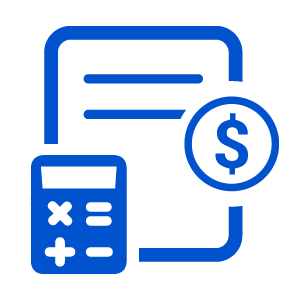




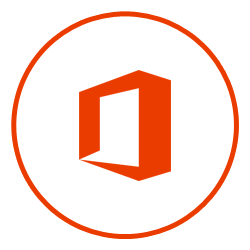


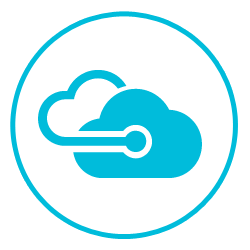



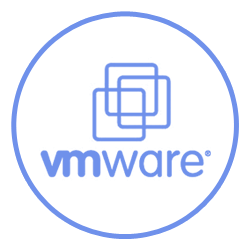
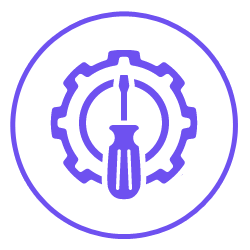








.png)



.png)

